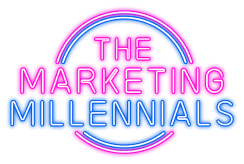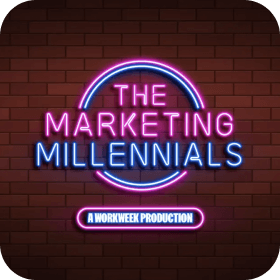Where Lululemon fails in product positioning, if a Marketing degree is necessary to succeed, and the secret sauce that takes B2B products from a cost to a value creator, we BREAK IT ALL DOWN in today’s email.
Today’s guest is a former Sr. Product Marketing Manager at Adobe and the current SVP of Marketing at Recharge (and a fellow Marketing Bestie) who sat down with me on the pod, meet Jen Gray.
So so so excited to have Jen here, what do ya say, let’s see what she had to say in her own liiiiiightly edited words. 👇
1. Do You Need to Have A Marketing Degree:
“Some of the best Marketers I’ve ever worked with didn’t study Marketing.
I personally studied exercise science, I wanted to be a nurse, and I just coincidentally found my way into Marketing.
Understanding the rhythm and the uniqueness of each company is what makes a Marketer, NOT where or what they studied in college because coming into the industry with a certain playbook doesn’t always work out.
One of my favorite product Marketing hires was a philosophy major, but he could communicate, he could storytell, he was wonderful.
(To all of our Marketing Besties who just *stumbled* into Marketing, we LOVE YOU.)
2. The Routine Economy:
The company I work for, Recharge, does subscriptions for DTC and Ecom brands and what we found when we looked into consumer behavior was an evolution of our economy (ouuu tell me more).
We started as a goods and services economy, which was quickly commoditized by the internet. Anyone could instantly compare product to product, so it drove everyone down to the lowest common denominator.
Then Ecom brands began evolving to the attention economy because they built incredible one to one relationships and then went to compete on digital platforms for consumer’s attention.
But now in 2024 what we’re seeing is a new level of economic value, which is the routine economy. Ecom brands need to figure out how to be embedded in the daily lives of their consumers if they want to have staying power. (You will NO LONGER survive by being a one time wallet purchase.)
It’s all about owning a piece of somebody’s routine. Millennials are now solidly in their sandwich era, which means that we’re taking care of elderly parents, we’re also trying to get enough water and protein in a day for ourselves, and we’re raising children (we Millennials are SLAYING OKAY).
So a routine is f*cking important.
Where we landed with the routine economy was how do we connect the dots from an emotional buyer’s perspective with what brands are promising to their consumers.
If you think about all the Ecom brands you consume, they promise things like better skin, better hair, or more energy in the morning.
Level up your marketing game
Zero BS. Just fun, unfiltered, industry insights with the game-changers behind some of the coolest companies from around the globe.
No spam. Unsubscribe any time.
Notice they’re all things that are so important that in order for you to hit your brand promise, consumers have to use that product over and over again.
So that’s where we found this emotional connection of routine to connect to brand’s goals (GENIUS).
3. Category Creating:
An interesting framework that I’ve seen play out at every company that I’ve been at (this applies to B2B and B2C), is I’ve never worked for a company and not been asked the question, should we category create?
Qualtrics was the best example of this, they were literally just surveys. They weren’t any better than survey monkey, but they nailed their category by category creation instead of competing in the same lane as survey monkey.
Qualtrics adjusted from being in a survey software category and they created experience management. That became their entire positioning and experience management (XM) now is plastered everywhere.
It was this idea of managing the experience that a brand gives to a consumer and making sure it matches up with what the consumer is actually experiencing.
High level, it’s figuring out what your category is, whether you need to be the best in your existing category or do you need to create a new category? Then getting crystal clear on what your product positioning is and then figuring out how to create buzz to make sure that you’re the only solution that will work.
Qualtrics did this by talking about the experience gap. They honed in on this idea that there was a gap between the experience that brands were giving consumers and their survey results. All of a sudden people stopped thinking about surveys, tools, features, and price, they now started thinking about value.
They started thinking about what Qualtrics could do to elevate them as customer experience (CX) professionals and how that could transform the delivery of their customer experience.
(Eight Sleep has done something similar by creating the “smart sleep” category!)
4. Product Positioning:
There are so many ways to think about product positioning, but I simplify it down to are you telling people what you do or are you telling people what you do for them?
Everyone has product positioning, REI has product positioning, CHOMPS has product positioning, it’s how you label your products in the hierarchy.
But my favorite example is Lululemon. If you go to Lululemon and you go to their dropdown, you can search for women’s clothing, things like leggings, sports bras, t-shirts, this is great, but it assumes that I know what I’m looking for as a consumer.
Lululemon knows that I’m looking for leggings, but when you do a product positioning based off of what you offer, like leggings, you then have to get into a feature battle with other providers.
So Lululemon has to spend time explaining why their fabrics are better (which isn’t as effective).
When you go back to that dropdown, there’s all these different fabrics that they highlight because they’re competing on their offer.
To avoid this, shift to what you do for the consumer down at the bottom of your dropdown. Lululemon has a section based on activity, you can search based off of yoga, travel, or tennis and that’s the pivot between shifting from what you’re providing and what tools you’re giving people, to what you’re solving which is WAY more impactful.
5. The Next Step:
Once you figure out what category you’re playing in and your product positioning, you then have to create a world in which you are the only solution that will work.
That’s Marketing. That’s brand Marketing. That’s the company’s story. That’s your content strategy. For Qualtrics, it was the experience gap, and you can watch clips of the CEO, Ryan Smith, every single interview he was on he talked about the experience gap.
(They single-handedly made it a thing because they just kept talking about it.)
Now the best formula I can lay out there is that your story has to be at the center of the Venn diagram of what’s happening in society and what’s happening out in the broader industry. For Recharge, it was that Millennials are crazy anxious (take care of yourself Marketing Bestie ❤️), but they have a lot of money to spend to elevate their every day.
From a societal standpoint, that’s where we positioned our product. Then it was like, what do you do as a product?
Recharge does retention and growth. The last piece is what your buyers are concerned about, for us it was how do we elevate the retention Marketers, the life cycle Marketers, the Marketers that are getting asked these hard Ecom questions about the business?
We took those three chunks and landed on the routine economy.
🥫. Secret Sauce:
The secret sauce that makes product positioning so much better is if you can figure out how to elevate your buyer within their company (like basically help them get promoted LOL).
Recharge is starting on that path where retention Marketers are being asked hard questions and they’re being held to some high standards.
But our product is there to help them elevate to be the experts that know the most about their loyal customers, helping retention Marketers answer those tough questions and continue to move towards positions of power within companies.
If you can nail your category, your product positioning, your brand story and elevate a buyer within their own company, that’s striking gold.”


